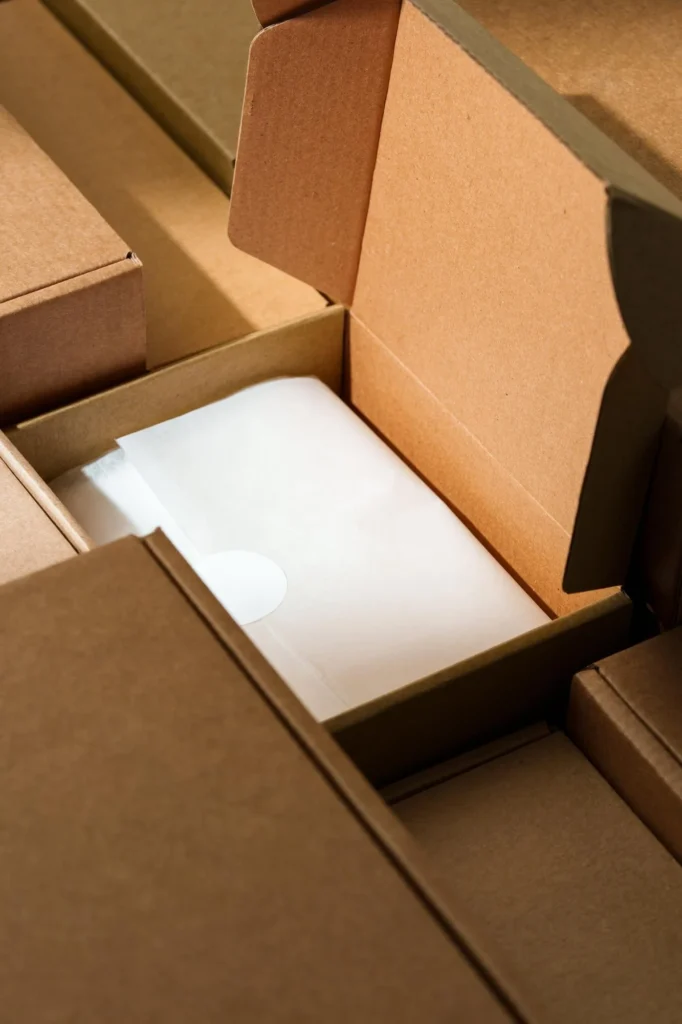How to Choose the Best Size for Your Custom Shipping Paper Box?
In the realm of shipping and packaging, custom shipping paper boxes have become a popular choice for businesses of all sizes due to their versatility, eco-friendliness, and cost-effectiveness. However, selecting the right size for these boxes is a crucial step that can significantly impact various aspects of your shipping operations, from protecting your products to managing costs. Here’s a detailed guide on how to make the best decision when it comes to sizing your custom shipping paper boxes.
1. Measure Your Product Precisely
The foundation of choosing the appropriate box size is accurately measuring the product you intend to ship. Use a reliable measuring tape to determine the length, width, and height of the item. For products with irregular shapes, it’s essential to identify the longest, widest, and tallest points. If your product consists of multiple components or accessories that will be shipped together, measure them as a combined unit.
Once you have the basic dimensions of the product, it’s important to add a buffer of space around it. This extra room is necessary to accommodate protective packaging materials such as bubble wrap, packing peanuts, or foam inserts. A general guideline is to add at least 1 to 2 inches of clearance on each side, but for more fragile items, you may want to increase this buffer to 3 or 4 inches to ensure maximum protection during transit.
2. Consider the Shipping Method and Carrier Requirements
The shipping method you choose and the specific requirements of the carrier can greatly influence the size of your custom shipping paper box. Different carriers have their own size and weight limits, as well as pricing structures based on dimensional weight. For example, some carriers may charge additional fees for oversized packages or those that exceed a certain weight threshold.
Research the shipping options available to you and carefully review the carrier’s guidelines regarding package dimensions. If you frequently ship internationally, be aware of the additional regulations and restrictions that may apply to the size and weight of your packages. By choosing a box size that complies with these requirements, you can avoid unexpected fees and ensure smooth and efficient shipping.
3. Evaluate the Type of Packaging Materials
The type and amount of packaging materials you plan to use will also play a role in determining the appropriate box size. If you opt for bulky or thick padding materials, such as dense foam or corrugated inserts, you’ll need a larger box to accommodate them. On the other hand, if you’re using lighter-weight materials like air pillows or thin bubble wrap, you may be able to get away with a smaller box.
Consider the level of protection your product requires and select the packaging materials accordingly. For delicate or high-value items, it’s often worth investing in more substantial packaging to minimize the risk of damage. Additionally, think about how the packaging materials will be arranged within the box to ensure that the product is securely held in place and protected from impact.
4. Plan for Future Shipments and Product Variations
When choosing a custom shipping paper box size, it’s important to think about your future shipping needs. If you anticipate shipping similar products in the future, it may be beneficial to select a box size that can accommodate a range of items. This can help you save on costs by reducing the need to order multiple box sizes and simplify your inventory management.
Furthermore, consider any potential product variations or new items that you may add to your product line in the future. Choose a box size that has some flexibility to accommodate these changes without having to completely overhaul your packaging strategy. This can help you stay prepared for growth and adapt to evolving customer demands.
5. Test the Box and Packaging Setup
Before finalizing your custom shipping paper box size, it’s essential to conduct a test run with the product and packaging materials. Place the product in the box and add the chosen packing materials to ensure a proper fit. Check for any gaps or loose areas that could allow the product to shift during transit, as this can increase the risk of damage.
If the box is too small, the product may not fit properly or may be damaged when trying to close the box. If the box is too large, the product may move around too much, which can also lead to damage. By testing the box and making any necessary adjustments, you can ensure that the product is well-protected and that the box is the right size for your shipping needs.
6. Seek Professional Advice if Needed
If you’re still unsure about the best size for your custom shipping paper box, don’t hesitate to seek professional advice. Packaging experts or suppliers can provide valuable insights and guidance based on their experience and knowledge of the industry. They can help you assess your specific requirements, recommend the most suitable box size and packaging materials, and even offer custom solutions tailored to your business needs.
In conclusion, choosing the best size for your custom shipping paper box requires careful consideration of various factors, including your product dimensions, shipping method, packaging materials, future needs, and testing. By taking the time to evaluate these aspects and make informed decisions, you can ensure that your products are well-protected during transit, minimize shipping costs, and enhance the overall customer experience. Remember, the right box size can make a significant difference in the success of your shipping operations, so it’s worth investing the effort to get it right.

